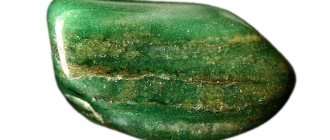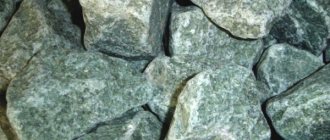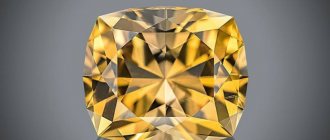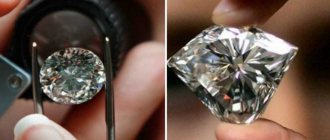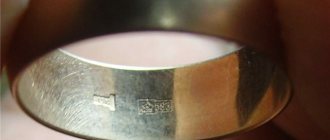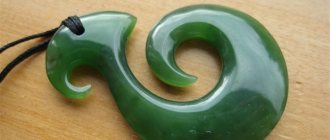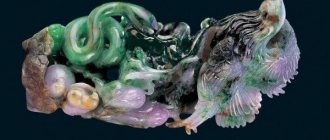If you held jade in one hand and jadeite in the other, would you be able to tell them apart? If not, don't worry because most people can't. Jade and jadeite were considered the same stone until 1863, when French mineralogist Alexis Damour discovered that the two stones were chemically different from each other.
Both stones are the green color we know and love in jade, but upon closer inspection there are key differences. Jadeite is one of the oldest and most sought after gemstones in the world.
Which countries supply jadeite?
Jadeite is mined in many locations around the world, including: throughout Kazakhstan, near the Omi and Kotaki Mountains in Japan, along the Motagua River Valley in Guatemala, in San Benito County, California, and in the Ural Mountains of Russia.
However, the largest and most profitable source of jadeite is Myanmar (formerly Burma). Experts estimate that 70% of the world's jadeite supply comes from Myanmar mines. In other words, if you need jadeite, Myanmar is a great source!
What about jade? Let's explore how it is formed, what it is and where this gemstone comes from all over the world.
Celestial of stone
In China, according to numerous writings and ideas of mystics, all creatures, as well as celestial beings, live in jade palaces. They can take the form of various animals, both real and mythical. For hundreds of years, Chinese craftsmen have been carving figurines that can protect a home, improve a career, and attract wealth and good luck.
The figure of the mighty rhinoceros was used to provide powerful protection for the home, family and health of household members, since even the tiger and many other creatures are afraid of him. According to the Feng Shui tradition, such a figurine should be placed in the corridor, in the most visible place, preferably directly opposite the entrance to the house. If a mirror is installed behind it, this will help the rhinoceros to reflect negative blows from those who enter the house with unkind thoughts, and all the negative energy will return to them in full.
What is jade?
Jade also forms in metamorphic rocks, but is subject to much less pressure and stress than jadeite. Therefore, it is softer than jadeite. Because jade is naturally found closer to the Earth's surface, it is found in sedimentary rocks around the world. One of the primary sources is New Zealand, where it adorns the sea and river banks.
Jade deposits are also found in Australia, Brazil, Canada, China, Russia, Zimbabwe and Alaska, where it has the honor of being the official state gemstone.
Applications beyond jewelry
Analyzing the meaning of the mineral for zodiac signs, healing and magical properties, not everyone knows that its scope is not limited to dishes, figurines and jewelry. Recently, the mineral has become a fashionable and wonderful option for kindling Russian baths and saunas. Just like volcanic rocks, jadeite:
- meets safety requirements;
- has a sufficient level of heat capacity;
- strong;
- healing.
Jadeite as a natural material is ideal for a sauna or Russian bath. Medium- and coarse-grained rocks are used to maximize heat retention and “light steam”, the appearance of which is promoted by the stone.
In terms of processing options, the most successful is crushed mineral. It lasts quite a long time, accelerates the temperature rise to 10 degrees, and noticeably faster than any other stone in the oven. In a bathhouse where jadeite is used, breathing is easy and pleasant, and aromatic substances actively spread throughout the room.
The question remains: crushed or polished - which is the best mineral to choose for a steam room in a bathhouse or sauna? Experts are inclined to favor the first option. The choice is explained by the ability of the crushed meat to quickly increase the temperature and evaporate water due to the increased surface area.
In addition, keep in mind that in order to polish the mineral, a tumbled drum and abrasives are used, particles of which will enter the steam room air when the moisture evaporates. Given their chemical composition, this can be hazardous to health.
Difference between jade and jadeite:
Color
The easiest way to distinguish jadeite from jade is by color. You're probably most familiar with the green color of jadeite, but this gemstone comes in almost every color of the rainbow. Jadeite can be white, apple green, pink, lavender and even dark blue. Of course, the most valuable color is the deep green known as "Imperial".
Fun fact: Red jadeite is commonly confused with Burmese ruby due to its similar color and quality.
Jade also comes in a variety of colors, from dark to light green and even black. Due to its high magnesium content, jade can be translucent from white to very light yellow, known in China as “mutton fat.”
Usage
Over the centuries, both jadeite and jade have served a variety of purposes in different cultures and societies. If you follow popular beauty trends, then chances are you have a jade roller massager sitting in your bathroom right now!
If you can believe it, long before jade was used to smooth out wrinkles and massage skin, it was used to create weapons. Weapons were probably the earliest use of these two minerals. Axes made of jadeite were found throughout the British Isles, and Maori warriors made murder weapons from jade.
At the 2008 Beijing Olympics, the Chinese government decorated the bronze, silver and gold medals with jade. Can you believe that for the first time in the history of the games, precious stones graced Olympic medals? This is impressive!
So if they're good enough for Olympic medals, they must be worth a pretty penny, right? In some cases, yes, although most commercially bought and sold jade is of relatively low value.
The most expensive jadeite piece ever sold is the Hutton-Mdivani necklace. The necklace is made of 27 emerald green beads and has a clasp set with diamonds and rubies. In 2014, the necklace was sold for $27.4 million.
Yu - godlike perfection
According to Chinese mystics, there are absolutely no differences between jade and jadeite. Almost every beauty in this country knows such a word as Yu, which means both minerals. However, there is a stronger decoding of this term, since when pronouncing it, the Chinese raise their finger to the sky and loudly exclaim - Yu, which is the meaning of heavenly and god-like perfection. They have a peculiar allegorical expression - to play with Yu, or in other words - to play with love.
Metaphysical properties of jadeite and jade
Healing the body
The name "nephritis" comes from the Greek word "nephros", which means "kidney". Jade is often found in the form of round pebbles that resemble human kidneys, hence the name. Because of this, jade is believed to have the ability to heal various internal diseases, including kidney stones and menstrual cramps.
Likewise, the name jadeite comes from the Spanish phrase “piedra de ijada,” which means “side stone.” In indigenous communities in Central America, it is a common practice to press a piece of jadeite to one's side to cure back pain and kidney problems.
Luck stones
Both jadeite and jade are considered “good luck” stones, most likely because their green coloring reminds people of money. Many people believe that if you want to attract wealth, you should always carry a jade or jadeite stone with you.
Features of Vesuviana
Jadeite stone has several types, and one of them is mined in the southern part of Italy, where the slope of a volcano called Vesuvius is located. The mineral contains impurities from eruptions that were mixed into the structure of the stone deep in the molten magma. The following substances were found in the composition:
- beryllium;
- manganese;
- copper and more.
Depending on the concentration of each component, the shade of the natural resource changes. All minerals found here received specific names depending on their color. For example: jadeite of a reddish hue is egeran, and pale blue is cyprin.
In the outskirts of California, vesuvianite of a greenish-olive color was found, which is now called californite. There is also a stone called Vesuvian jade, which contains 5% chromium.
Key Differences Between Jade and Jadeite
As you can see, there are similarities and differences between these two beautiful gemstones. Do you think you can now distinguish jadeite from jade? If not, don't worry, here's a quick overview:
- jade is more common, jadeite is rarer and more valuable;
- jadeite is harder, 6.5-7 on the Mohs scale, compared to jade (6-6.5 on the Mohs scale);
- Chemically, jade is composed of iron, calcium, magnesium silicate, while jadeite is composed of aluminum, sodium silicate (which makes it harder).
For more information, visit https://www.gemrockauctions.com/learn/did-you-know/difference-between-nephrite-jade-jadeite
Relics with a dangerous past
According to modern sorcerers, original ritual knives from the times of the Aztecs, Toltecs and similar peoples are especially dangerous objects. They have the energy of a bloodthirsty dark essence. Only someone who is a priest who has an ancient language in the form of: the hiss of a snake, a bird whistle, the growl of a tiger and even the murmur of water can cope with it.
Today, it is almost impossible to find someone who knows these languages, since they are a thing of the past along with the Mesoamerican civilization and their burned books. In historical museums there are several rope bundles made using knot writing. But even an ultra-modern and high-tech computer cannot decipher them.
Mystics believe that in those places of the Amazon jungle that are still unknown to the modern world, those who possess an ancient magical language and talismans made of natural jadeite stone with the strongest magical powers may still live.
How does jadeite stone affect different zodiac signs?
During the Renaissance, this natural mineral was considered an indispensable attribute of astrological practitioners and mystics from Europe. According to lithoastrologers, this stone is not suitable for everyone, which has been revealed through numerous astrological studies and studies of the negative and positive influence of the planet on certain phases of the moon and seasons.
In addition, from year to year information has accumulated on how:
- correctly and incorrectly use the gift of nature;
- the mineral can affect the human body, his psyche and consciousness;
- The stone helps and harms people.
According to the horoscope, this jade is most suitable for representatives of the earth element, but mainly for Virgos, as well as Libra and Leo. It is able to enhance a person’s energy, promote the realization of planned desires and improve volitional qualities.
Unfortunately, it can also have a negative impact on a person if he is born under signs such as Pisces, Cancer and Scorpio. Under its influence they become apathetic and pessimistic. Other zodiac signs can use the stone as a completely ordinary talisman to achieve harmony in their energy field, tame their temperament and character, and also to acquire qualities such as kindness, nobility and calmness.
Emperors' Treasure
The jadeite stone is also recognized in Japan as a stone that stands at the highest level of the mystical hierarchy of gems. The Japanese emperor possessed three main treasures, and the gods gave him a necklace made from white jadeite beads. Archaeologists have found jadeite amulets of yellow and green color, shaped like a comma, and they date back to the 6th century BC. However, similar decorations are still used in Japan today. Jadeite is recognized as divine in India, Nepal and beyond.
The purpose of the jadeite amulet
In ancient cultures all over the world, jadeite is a stone that accompanies a person’s entire journey from birth to his last breath. For example, heirs who were just born were always presented with an amulet made from white jadeite. And the deceased leaders were sent to graves and crypts with stone vestments made of several thousand plates, from which magical clothing, masks and more were created. Such burials were made in China, Altai and even in some parts of America.
Thai amulet
In the Kingdom of Thailand, the symbol of the country is the Buddha, made of emerald. This statue is small in size, 1 cubit high and carved from a single natural mineral. Modern lithographers are of the opinion that jadeite was used for production, but there is no such term in the Thai language.
According to the legends of the Thai peoples, the image of the god Shakyamuni was removed from the ruins of an ancient pagoda, which was once incinerated by lightning. She, by the will of fate, remained absolutely unharmed and was removed from the rubble by the monks in 1436. For three hundred years, the statue wandered from sanctuary to sanctuary and, ultimately, the Thai king Rama 1 built a special temple on the territory of Bangkok in 1779. It is here that the relic is kept to this day on a high pedestal of gold.
Recognition methods
There are methods for recognizing copies of jade, used in the laboratory and at home.
Visual
If this method is used, then the authenticity of the jade is assessed in terms of the external characteristics of the mineral.
At what points is the copy checked:
- Shine: jade differs from other stones in its muted, greasy shine. Serpentine and other natural copies are characterized by a glassy luster.
- Pattern: A genuine gem is characterized by a clear layered pattern with pronounced color transitions. Analogs have blurred shade boundaries.
- Structure: The fibrous pattern is a distinctive feature of jade. You can examine it under a microscope to assess its authenticity. Therefore, it is easy to distinguish jade from jadeite: the analogue has a clear granular structure, which is uncharacteristic of the genuine specimen.
- Translucency: If you look at the light through jade, you can see that the edges of the stone are slightly translucent.
Mechanical
Mechanical impact will help evaluate the properties:
- Scratching: Take a steel knife or needle and try to make a scratch on the stone. If the specimen is natural, this will not be possible. But it is not recommended to check jade with inclusions in this way, as parts of them may be scratched.
- Viscosity: The stone is characterized by viscosity, which is not found in most natural gemstones. A small specimen can be cut with a sharp knife, but it will not be broken into fragments. When mechanical damage occurs, a dent forms on the surface of the mineral.
- Thermal Conductivity: Jade remains slightly cool to the touch at normal ambient temperatures. But if you heat the mineral, it will retain heat for a long time. Fakes do not have this property.
- Sound: This parameter can be used to test small beads or thin pieces of jade. When they hit each other slightly, they produce a melodic sound. If the product is made from pressed stone or other similar minerals, the sound will be muffled. Attention! This authentication method is not suitable if large products are being tested.
- Fire: this is the most reliable method for identifying a fake, used at home. To conduct the test, you need to take a lighter and bring its flame to the surface. After half a minute, soot will appear on the surface. However, it can be completely removed with a napkin. Soot will remain on the fake. When heated, plastic will emit an unpleasant chemical odor.
- Durability: if a large jade product falls on the floor, it will not break, since the stone is durable.
Formal
Formal methods include analysis of the cost, origin and documentation that accompanies the specimen being studied:
- Price: the cost of a stone depends on its external characteristics. Rich green and white specimens are considered the most expensive. The highest quality stone costs from 50 US dollars per 1 carat. Such minerals are commonly used in jewelry. An example of average quality costs no more than $30 per carat. The price of pressed imitations will be much lower than the price of the original.
- Country of origin: the most expensive are jades mined in China and New Zealand. Information about the place of extraction can be obtained from the seller.
- Certificate of quality: this document, which includes complete information about the main characteristics of the stone (weight, shade, place of extraction), is available for each authentic specimen. In Europe, the stone is not valued too highly, so it has an affordable price. In the East, on the contrary, it is impossible to purchase cheap jade.
Important! Only a certified gemologist working with special equipment and reagents can give an accurate assessment of the authenticity of a mineral.
To avoid wasting your savings on counterfeits, purchase jade products only in specialized stores that have an excellent reputation among customers.

